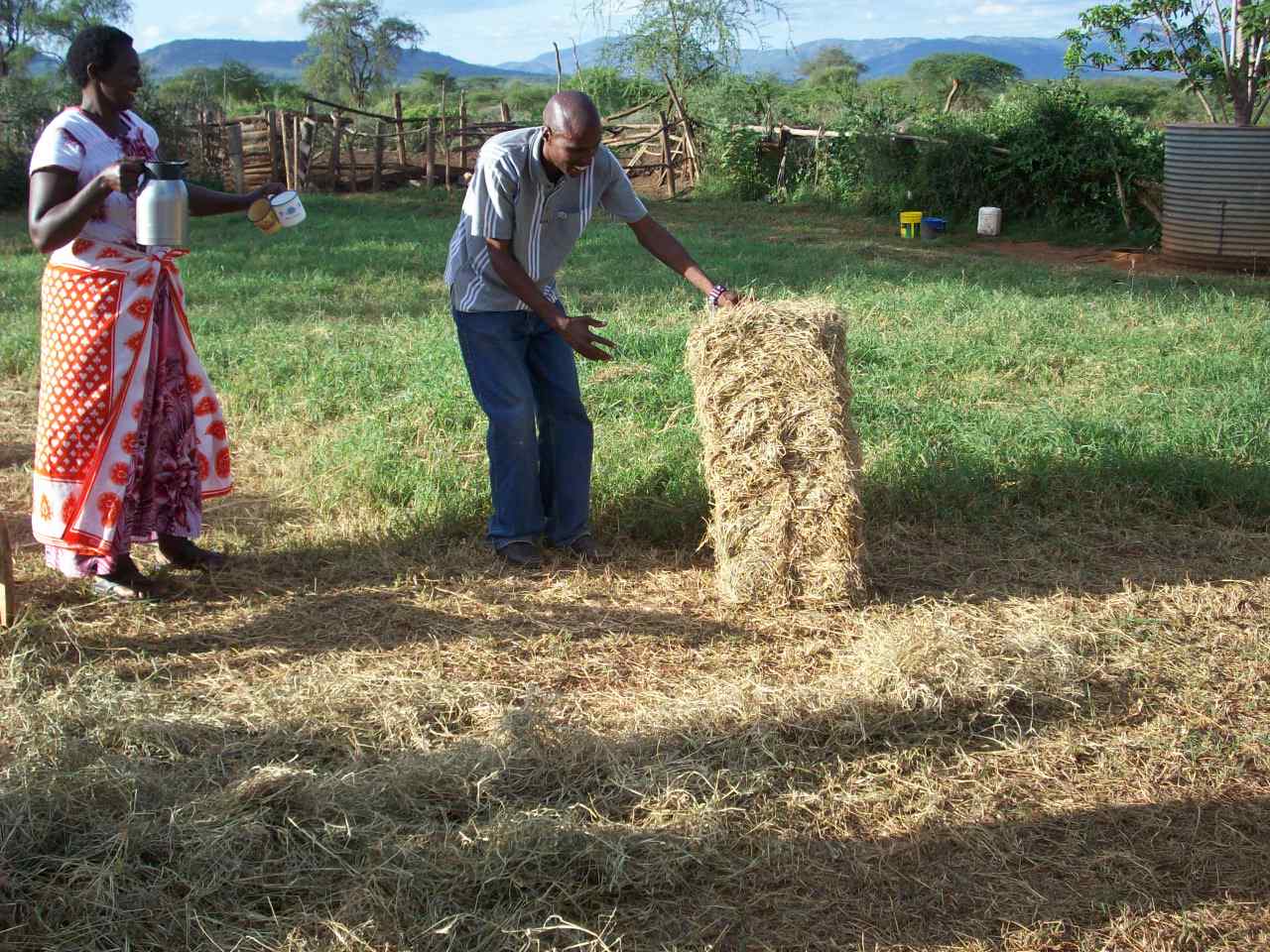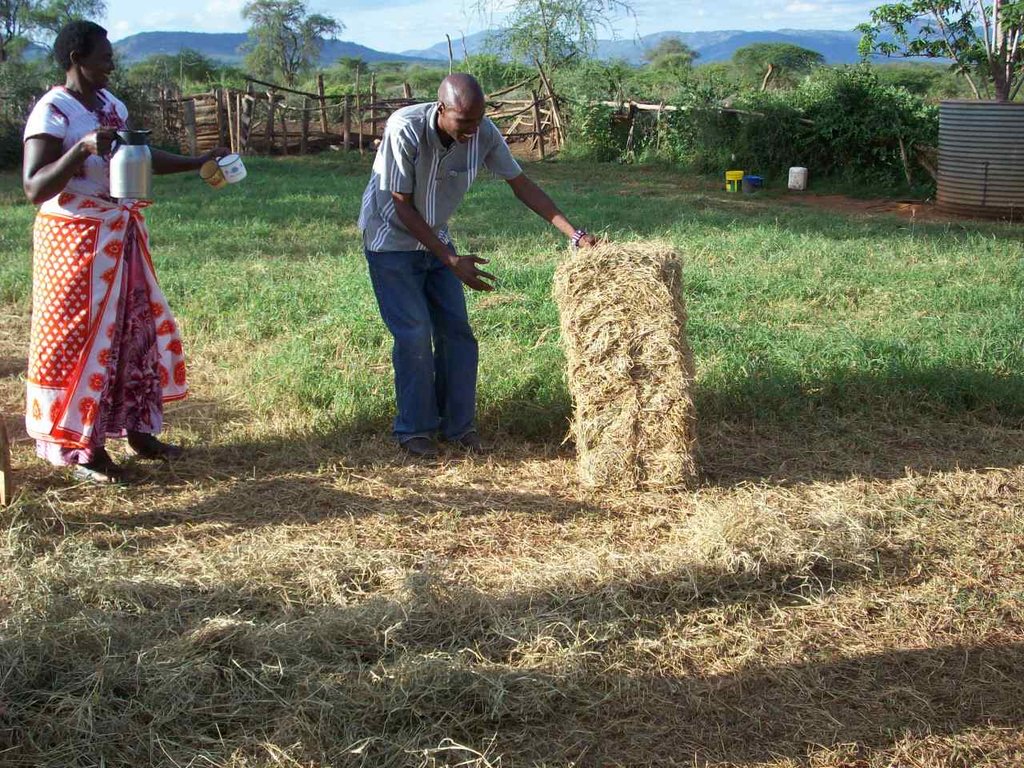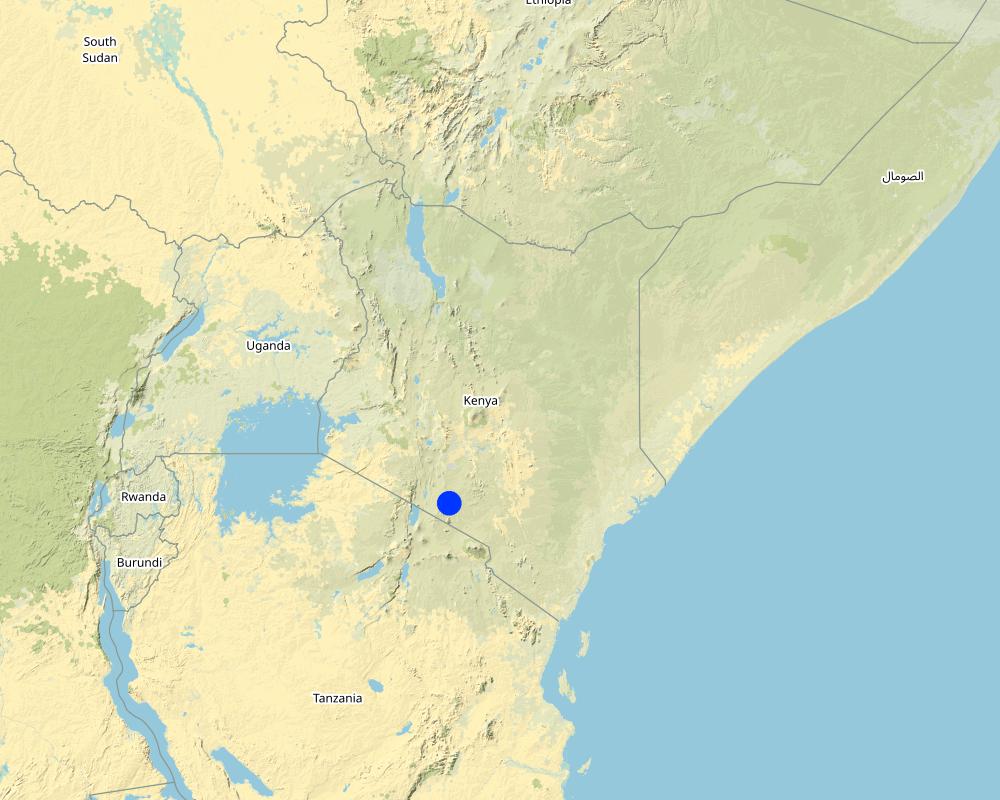Soil and water conservation. This assists in regeneration of pasture and prevention of desertification due to poor land use practices. [Kenya]
- Creation:
- Update:
- Compiler: SAIKO JOYCE
- Editor: –
- Reviewers: Joana Eichenberger, Donia Mühlematter, Rima Mekdaschi Studer, Hanspeter Liniger
Eramatata e nkulukuoni pee ebulu inkijit
technologies_3220 - Kenya
- Full summary as PDF
- Full summary as PDF for print
- Full summary in the browser
- Full summary (unformatted)
- Soil and water conservation. This assist in regeneration of pasture and prevention of desertification due to poor land use practices.: June 28, 2018 (inactive)
- Soil and water conservation. This assists in regeneration of pasture and prevention of desertification due to poor land use practices.: June 14, 2021 (inactive)
- Soil and water conservation. This assist in regeneration of pasture and prevention of desertification due to poor land use practices.: Sept. 3, 2018 (inactive)
- Soil and water conservation. This assists in regeneration of pasture and prevention of desertification due to poor land use practices.: Nov. 2, 2021 (public)
- Soil and water conservation. This assist in regeneration of pasture and prevention of desertification due to poor land use practices.: May 22, 2018 (inactive)
View sections
Expand all Collapse all1. General information
1.2 Contact details of resource persons and institutions involved in the assessment and documentation of the Technology
Key resource person(s)
land user:
MILIA Duncan Milia
NEIGHBOURS INITIATIVE ALLIANCE
Kenya
1.3 Conditions regarding the use of data documented through WOCAT
The compiler and key resource person(s) accept the conditions regarding the use of data documented through WOCAT:
Yes
1.4 Declaration on sustainability of the described Technology
Is the Technology described here problematic with regard to land degradation, so that it cannot be declared a sustainable land management technology?
No
Comments:
The technology is land friendly and has sustained the Maasai pastoralists livelihood so far.
2. Description of the SLM Technology
2.1 Short description of the Technology
Definition of the Technology:
In this new technology the Maasai people set aside some acres of land, fence it and plant grass where the land is bear or allow natural standing grass to germinate then harvest it and store as hay for future use. This also helps in preventing soil erosion and surface run off.
2.2 Detailed description of the Technology
Description:
The Technology is applied in a natural environment where grass is grow for livestock consumption and sometime for sale in case there is plenty. The main elements of this simple technology is using both existing and experts knowledge to grow grass and conserve it as hay as well as retaining underground water and conserving fertile soils. Identification and fencing of land, planting of grass where necessary has been key in the technology. The purpose of the technology is to regenerate more pasture in arid and semi-arid areas hence sustaining people livelihoods. To maintain the activity, simple tools like sickles, panga, ropes, hay boxes/hole and construction of hay ban/store. The technology helps to provide hay/pasture throughout the season, prevent livestock deaths and providing sustainable source of income for the Maasai. Once there is sustainable income, children will be enrolled in schools and will be able to complete their studies. There will be no livestock migration hence reduced livestock deaths due to diseases and hunger. Land user like continuous supply of hay for livestock, increased production and increased income at the household level. They sometimes do not like to work as labourers as they consider that as lot of work.
2.3 Photos of the Technology
General remarks regarding photos:
A powerful camera might be needed for more clear photos
2.4 Videos of the Technology
Comments, short description:
NO VIDEOS FOR THE TECHNOLOGY AVAILABLE FOR NOW
Date:
18/10/2017
Location:
KAJIADO -KENYA
Name of videographer:
NONE
2.5 Country/ region/ locations where the Technology has been applied and which are covered by this assessment
Country:
Kenya
Region/ State/ Province:
KAJIADO
Further specification of location:
ENKORIKA LOCATION OF KAJIADO CENTRAL SUB-COUNTY
Specify the spread of the Technology:
- applied at specific points/ concentrated on a small area
Comments:
The technology is spreading faster among Maasai pastoralists and its impact is already visible.
Map
×2.7 Introduction of the Technology
Specify how the Technology was introduced:
- through projects/ external interventions
3. Classification of the SLM Technology
3.1 Main purpose(s) of the Technology
- improve production
- reduce, prevent, restore land degradation
- conserve ecosystem
- reduce risk of disasters
- adapt to climate change/ extremes and its impacts
- create beneficial economic impact
3.2 Current land use type(s) where the Technology is applied

Grazing land
Extensive grazing:
- Semi-nomadic pastoralism
- Sahiwal, zebu cattle
Products and services:
- meat
- milk
Comments:
The land is used for grazing livestock either on open fields or for keeping livestock in fenced secured places, where it is fed with hay (this only happens during dry seasons).
Number of growing seasons per year: 2
April-May and October-December
3.3 Has land use changed due to the implementation of the Technology?
Comments:
The Maasai used to graze their livestock on open grass land during the group ranch tenure system. There were not specific places designated for grazing during the rainy or dry season everybody grazed where they wanted.
3.4 Water supply
Water supply for the land on which the Technology is applied:
- rainfed
Comments:
This is a semi-arid area with two raining seasons (April-May and October-December) under normal situation but the area can miss rain for an entire year.
3.5 SLM group to which the Technology belongs
- area closure (stop use, support restoration)
- pastoralism and grazing land management
3.6 SLM measures comprising the Technology

vegetative measures
- V2: Grasses and perennial herbaceous plants

management measures
- M2: Change of management/ intensity level
- M4: Major change in timing of activities
Comments:
Land use is changed from normal grazing land to fenced area designated for hay production.
3.7 Main types of land degradation addressed by the Technology

soil erosion by water
- Wt: loss of topsoil/ surface erosion

biological degradation
- Bc: reduction of vegetation cover

water degradation
- Ha: aridification
Comments:
The technology address soil and water conservation which increases pasture generation hence safe livelihoods
3.8 Prevention, reduction, or restoration of land degradation
Specify the goal of the Technology with regard to land degradation:
- reduce land degradation
- restore/ rehabilitate severely degraded land
Comments:
Most of the land, where the technology is applied on has been degraded hence reducing its production
4. Technical specifications, implementation activities, inputs, and costs
4.1 Technical drawing of the Technology
Technical specifications (related to technical drawing):
NO drawing available for now.
4.2 General information regarding the calculation of inputs and costs
Specify how costs and inputs were calculated:
- per Technology area
Indicate size and area unit:
100 acres
other/ national currency (specify):
Kenyan Shilling (KES)
If relevant, indicate exchange rate from USD to local currency (e.g. 1 USD = 79.9 Brazilian Real): 1 USD =:
100.31
Indicate average wage cost of hired labour per day:
500 KES
4.3 Establishment activities
| Activity | Timing (season) | |
|---|---|---|
| 1. | Land identification | 6 hours |
| 2. | Fencing of identified land | 5 or more days depending on land size |
| 3. | Land preparation for reseeding | 7 days or more |
| 4. | Reseeding | 3 hours |
| 5. | Continuous management and weeding | Through out the period when the grass is in the field before harvesting |
| 6. | Harvesting | 12 hours or more |
| 7. | Hay storage | 4 hours |
Comments:
Each step of the process is important and is given attention for production to be complete
4.4 Costs and inputs needed for establishment
| Specify input | Unit | Quantity | Costs per Unit | Total costs per input | % of costs borne by land users | |
|---|---|---|---|---|---|---|
| Labour | fencing | person days | 5.0 | 500.0 | 2500.0 | 100.0 |
| Labour | preparation of land and seeding | person days | 8.0 | 500.0 | 4000.0 | 100.0 |
| Labour | fertilization and weeding | peson days | 7.0 | 500.0 | 3500.0 | 100.0 |
| Labour | harvesting | person days | 1.0 | 500.0 | 500.0 | 100.0 |
| Equipment | building of hay storage facility | person days | 5.0 | 500.0 | 2500.0 | 100.0 |
| Equipment | hay bale press (as seen in the picture) | machine hour | 2.0 | |||
| Plant material | grass seeds | kg | 8.0 | |||
| Fertilizers and biocides | manure | |||||
| Construction material | fencing material poles | pieces | ||||
| Construction material | fencing material wire mesh | meters | ||||
| Construction material | storage facility (corrugated metal sheets for roof, cement for base, poles and wire mesh for sides etc | |||||
| Total costs for establishment of the Technology | 13000.0 | |||||
| Total costs for establishment of the Technology in USD | 129.6 | |||||
4.5 Maintenance/ recurrent activities
| Activity | Timing/ frequency | |
|---|---|---|
| 1. | Reparation of fence | require repair may be once every season |
| 2. | Land preparation | Done every raining season |
| 3. | Seeds section | One on the onset of the planting season |
| 4. | Harvesting of hay | Hay is harvested once it is ready |
| 5. | Safe storage of hay | Done once (building the store) |
4.7 Most important factors affecting the costs
Describe the most determinate factors affecting the costs:
Purchase of materials at the beginning of the project.
5. Natural and human environment
5.1 Climate
Annual rainfall
- < 250 mm
- 251-500 mm
- 501-750 mm
- 751-1,000 mm
- 1,001-1,500 mm
- 1,501-2,000 mm
- 2,001-3,000 mm
- 3,001-4,000 mm
- > 4,000 mm
Specifications/ comments on rainfall:
Annual rainfall is not predictable, it keeps changing every year
Indicate the name of the reference meteorological station considered:
Kenya Meteorological Department
Agro-climatic zone
- semi-arid
Long dry, and windy seasons
5.2 Topography
Slopes on average:
- flat (0-2%)
- gentle (3-5%)
- moderate (6-10%)
- rolling (11-15%)
- hilly (16-30%)
- steep (31-60%)
- very steep (>60%)
Landforms:
- plateau/plains
- ridges
- mountain slopes
- hill slopes
- footslopes
- valley floors
Altitudinal zone:
- 0-100 m a.s.l.
- 101-500 m a.s.l.
- 501-1,000 m a.s.l.
- 1,001-1,500 m a.s.l.
- 1,501-2,000 m a.s.l.
- 2,001-2,500 m a.s.l.
- 2,501-3,000 m a.s.l.
- 3,001-4,000 m a.s.l.
- > 4,000 m a.s.l.
Indicate if the Technology is specifically applied in:
- concave situations
Comments and further specifications on topography:
The land is flat with little vegetation cover. The area receives minimal rainfall
5.3 Soils
Soil depth on average:
- very shallow (0-20 cm)
- shallow (21-50 cm)
- moderately deep (51-80 cm)
- deep (81-120 cm)
- very deep (> 120 cm)
Soil texture (topsoil):
- medium (loamy, silty)
Soil texture (> 20 cm below surface):
- fine/ heavy (clay)
Topsoil organic matter:
- high (>3%)
5.4 Water availability and quality
Ground water table:
> 50 m
Availability of surface water:
medium
Water quality (untreated):
poor drinking water (treatment required)
Is flooding of the area occurring?
No
Comments and further specifications on water quality and quantity:
Water quality is poor and its storage is poor too
5.5 Biodiversity
Species diversity:
- high
Habitat diversity:
- high
5.6 Characteristics of land users applying the Technology
Sedentary or nomadic:
- Semi-nomadic
Market orientation of production system:
- subsistence (self-supply)
Relative level of wealth:
- average
Individuals or groups:
- individual/ household
- groups/ community
Level of mechanization:
- manual work
- animal traction
Gender:
- women
- men
Age of land users:
- middle-aged
Indicate other relevant characteristics of the land users:
Most of them are illiterate hence require continuous training and demonstration
5.7 Average area of land used by land users applying the Technology
- < 0.5 ha
- 0.5-1 ha
- 1-2 ha
- 2-5 ha
- 5-15 ha
- 15-50 ha
- 50-100 ha
- 100-500 ha
- 500-1,000 ha
- 1,000-10,000 ha
- > 10,000 ha
Is this considered small-, medium- or large-scale (referring to local context)?
- small-scale
Comments:
The maasai own large pieces of land but only set aside a small portion for the technology.
5.8 Land ownership, land use rights, and water use rights
Land ownership:
- individual, titled
Land use rights:
- individual
Water use rights:
- communal (organized)
Comments:
Most of the water sources are communally own. So rules are set to govern water use.
5.9 Access to services and infrastructure
health:
- poor
- moderate
- good
education:
- poor
- moderate
- good
technical assistance:
- poor
- moderate
- good
employment (e.g. off-farm):
- poor
- moderate
- good
markets:
- poor
- moderate
- good
energy:
- poor
- moderate
- good
roads and transport:
- poor
- moderate
- good
drinking water and sanitation:
- poor
- moderate
- good
financial services:
- poor
- moderate
- good
6. Impacts and concluding statements
6.1 On-site impacts the Technology has shown
Socio-economic impacts
Production
fodder production
Comments/ specify:
Fodder production was poor before the technology but have improved after the technology
fodder quality
Comments/ specify:
Fodder quality have also improved after the technology
animal production
Comments/ specify:
The Maasai have increased milk and meat production after the technology was introduced.
Water availability and quality
water availability for livestock
Comments/ specify:
Surface water has been retained under the soil hence regeneration of pasture for long.
Income and costs
farm income
Socio-cultural impacts
SLM/ land degradation knowledge
conflict mitigation
Ecological impacts
Water cycle/ runoff
surface runoff
Comments/ specify:
surface runoff has been controlled
evaporation
Soil
soil moisture
Comments/ specify:
Soil moisture improved after the technology
soil loss
soil organic matter/ below ground C
6.2 Off-site impacts the Technology has shown
Overgrazing
6.3 Exposure and sensitivity of the Technology to gradual climate change and climate-related extremes/ disasters (as perceived by land users)
Gradual climate change
Gradual climate change
| Season | increase or decrease | How does the Technology cope with it? | |
|---|---|---|---|
| annual temperature | increase | moderately | |
| other gradual climate change | increase | moderately |
Climate-related extremes (disasters)
Climatological disasters
| How does the Technology cope with it? | |
|---|---|
| drought | not well |
6.4 Cost-benefit analysis
How do the benefits compare with the establishment costs (from land users’ perspective)?
Short-term returns:
slightly positive
Long-term returns:
positive
How do the benefits compare with the maintenance/ recurrent costs (from land users' perspective)?
Short-term returns:
slightly positive
Long-term returns:
positive
6.5 Adoption of the Technology
- > 50%
Of all those who have adopted the Technology, how many did so spontaneously, i.e. without receiving any material incentives/ payments?
- 11-50%
6.6 Adaptation
Has the Technology been modified recently to adapt to changing conditions?
No
6.7 Strengths/ advantages/ opportunities of the Technology
| Strengths/ advantages/ opportunities in the land user’s view |
|---|
| Advantages of producing, managing and storing hay has been seen to improve livestock production hence improving income for the Maasai. |
| Production of hay also enhance skills and knowledge for the Maasai pastoralists. |
| Hay can also be produced and sold to other people which means additional income for the household. |
| Strengths/ advantages/ opportunities in the compiler’s or other key resource person’s view |
|---|
| Production of hay also enhance skills and knowledge for the Maasai pastoralists. |
| Advantages of producing, managing and storing hay has been seen to improve livestock production hence improving income for the Maasai. |
| Hay can also be produced and sold to other people which means additional income for the household. |
| This is a way to adapt to the changing environment for maasai pastoralists be it land tenure, limited mobility, climate variability and change (droughts), social and physical infrastructure etc. |
7. References and links
7.1 Methods/ sources of information
Links and modules
Expand all Collapse allLinks
No links
Modules
No modules




